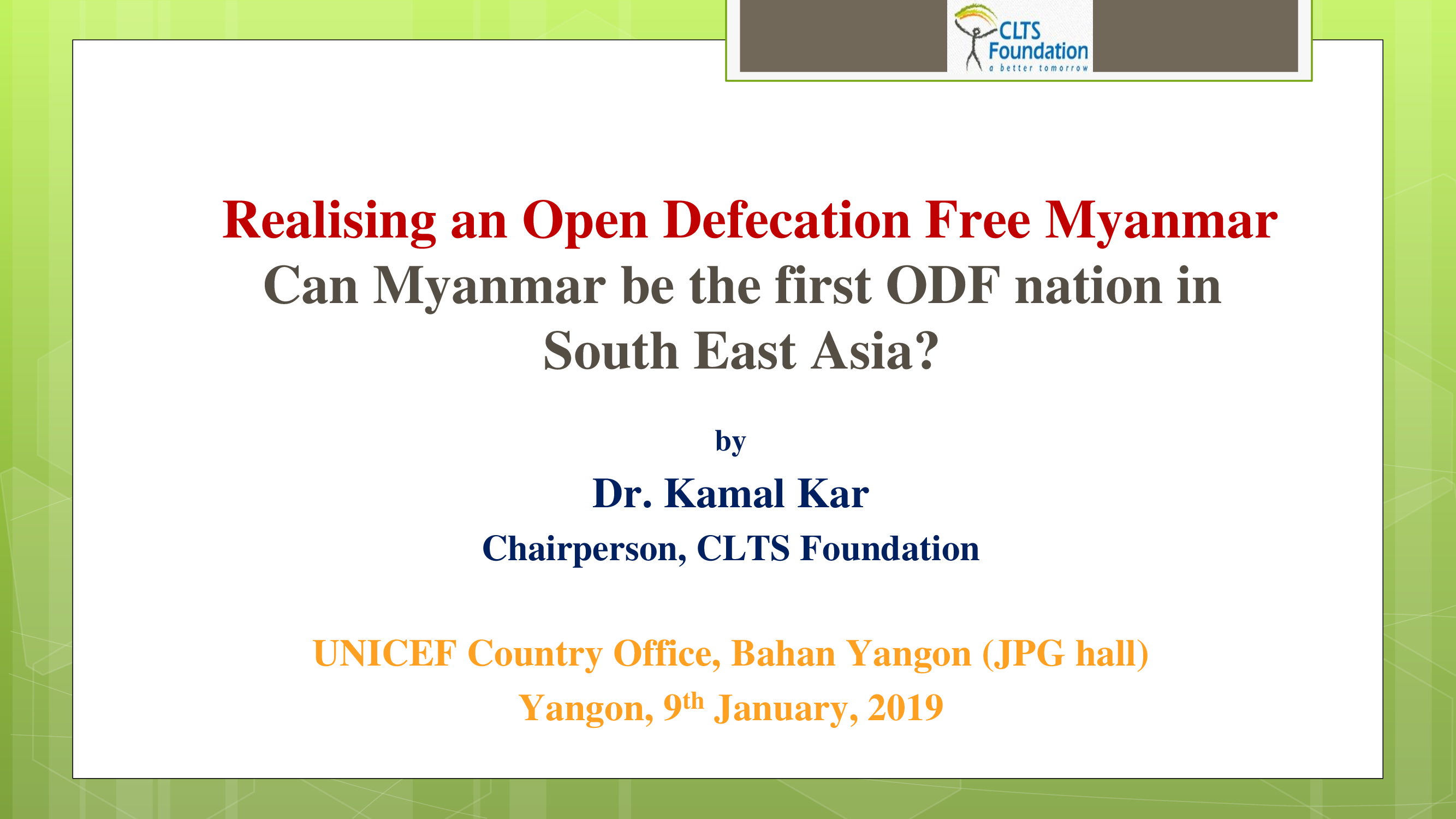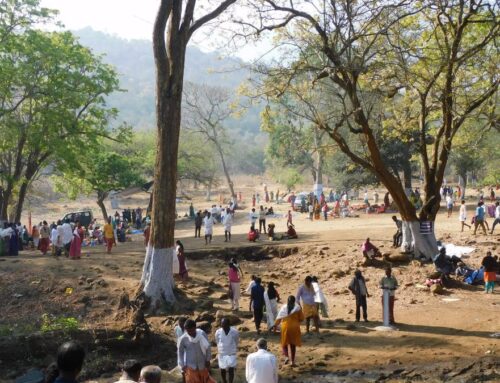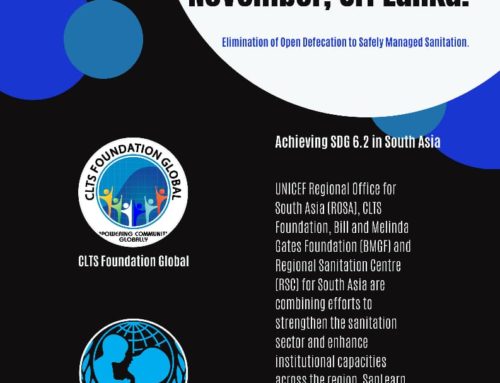National level focus on sanitation in Myanmar started in 1952 through the Pyi-Taw-Thar project and since then the country has experimented with various approaches to improve their sanitation profile. During the period of 1982-1995, the approach of sanitation programmes in Myanmar was majorly supply-driven and was supported by UNICEF. The focus became demand-driven in the years 1996 to 2011 where the focus was laid on social mobilization to achieve the goals. Community led Total Sanitation (CLTS) was introduced in Myanmar after Dr Kamal Kar’s first visit in the year 2012 through a Regional workshop and ToT for government and non-governmental officials in Pyay. CLTS implementation has been continuing since then.

CLTS Foundation with UNICEF Myanmar and other WASH partners
On 9th January 2019, CLTS Foundation and UNICEF Myanmar initiated a discussion at the UNICEF Country Office in Bahan Yangon. The focus of the discussion was to review the progress in sanitation made by the nation so far and to look forward towards planning for scaling up of Open Defecation Free (ODF) initiatives in a meaningful partnership. The proposed agenda of the discussion was:-
- Regional and global updates on CLTS initiatives focusing SDG 6.2 by Dr Kamal Kar
- Brief updates on current ODF initiatives in Myanmar by WASH partners
- Question/Answer/Discussion
The Sustainable Development Goal 6 is to ensure availability and sustainable management of water & sanitation for all. Target 6.2 within the goal specifies that by 2030, the world must achieve access to adequate and equitable sanitation and hygiene for all and end open defecation, paying special attention to the needs of women and girls and those in vulnerable situations. This will be monitored by Indicator 6.2.1 which is the proportion of the population using safely managed sanitation services, including a hand-washing facility with soap and water.
Globally, there are 2.3 million people who still lack access to basic and safe sanitation services. According to the JMP Report, 2015, South East Asia accounts for 8.27% of people having access to basic sanitation; East and South-Eastern Asia accounts for 2.66% and Central and Southern Asia account for 33.25%. It is surprising to note that while most of the countries of South East Asia (For e.g. Cambodia, Indonesia, Philippines, Vietnam) showed an improvement in the access to basic sanitation services from the year 2000 to the year 2015, Myanmar showed a decrease from 70% to 65% despite its efforts. The percentage is stunting among infants stands at 35%. The under-five mortality rate is 50 per 1000 live births and diarrhoea incidence is 61%.
What are the reasons for the decline and lack of sustainability in Myanmar?
Myanmar has the existence of CLTS guidelines in the local language but without adaptability. While the off criterion is being established, the current standards seem quite high considering the sanitation market’s underdevelopment with either limited access to markets by the rural population, very few affordable sanitation options, or both.
There is a lack of an enabling environment including the existence of a formal well circulated proper policy/strategy. Triggering and integration with other approaches have shown good results, however low triggering quality and post off support without the access and availability of materials for scaling up does not yield good results in the long term.
Sanitation is under the Ministry of Health and since it has been integrated with other approaches, one would assume that the sanitation and health outcomes would be better. However, CLTS process continues to be led by NGOs or other implementers and is not implemented under the government’s leadership leading financial crunch in terms of funding from the government. Coordination with other ministries for CLTS is ad hoc or nonexistent without any formal mechanism.
Myanmar has only shown improvement with regards to implementation which to a large extent the victory of the communities but the support after has not been enough to ensure sustainability. The lack of government commitment and associated budget and human resources is seen as holding back the scaling up of CLTS and taking it beyond the hands of development partners and NGOs into a national approach. The need for well-trained facilitators, including from governments, with regular refresher training, was noted in Myanmar. Construction of low-quality latrines with pits that flood in high water table areas or collapse in sandy soils resulted in a reversion to open defecation. Village leaders can generate community support for individuals in the form of labour, materials or cash, but this depends on the strength of the local leader.
What does Myanmar need to do to ascend along the sanitation ladder?
- Establish a national level WASH policy/protocol and strategy including all stages of CLTS and across all levels.
- Develop market linkages to provide access to better sanitation materials- Example Lixil (Japanese company providing to African countries in 5-10$ )
- Develop local context related proper training and triggering materials and modules along with quality control mechanisms
- Remove subsidies and mainstream CLTS into the MoH guidelines and strategy
- Establish inter-institutional working groups from all ministries
- Create flexible funding from all the ministries for implementation of innovative ideas
- Include Natural Leaders and Community Consultants along with civil society organisations for scaling up and integration
- Establish proper ODF protocol at the national level including guidelines for continuous monitoring





Leave A Comment